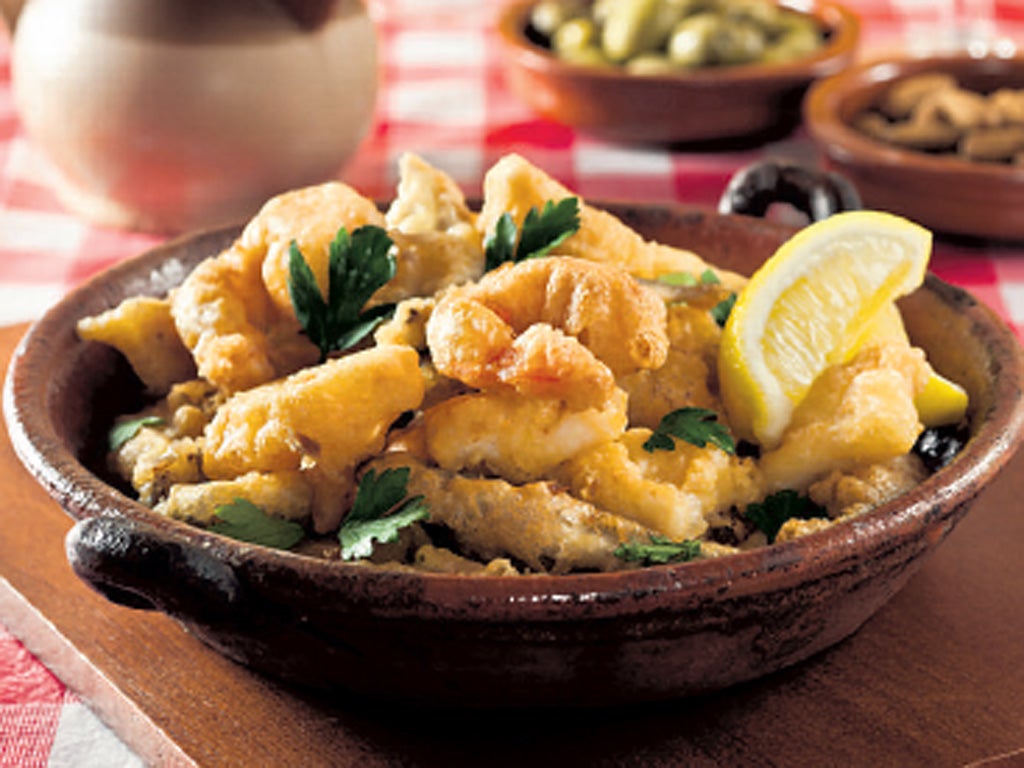Anchovies or oranges – the choice is yours
A taste of Andalucía

The outskirts of Algeciras, an industrial city across the bay from Gibraltar, are an unlikely location for a fine restaurant. But the Meson El Copo on Calle Trasmayo (00 34 956 677 710; elcopo.es) in Palmones-Los Barrios has a formidable reputation. Diners throng to the place for lunch and dinner, eager to feast on the 30 varieties of fish and seafood on offer. The restaurant employs its own boats to fish in the waters of the Mediterranean and the Atlantic, and the catch is brought in fresh each day.
Fish features prominently on menus all along the Andalucían coast. Often it is coated in flour and fried: anchovies, small sole, baby hake, squid served together as pescaíto frito, which originated in Málaga but is now popular elsewhere, too. In Cádiz it is often served in a paper cone from the equivalent of the British chip shop. There, too, a whole fish, usually bream or seabass, is often cooked in a hard casing of salt, which is lifted off to reveal a succulent fish beneath.
Bulls are synonymous with Andalucía, and although some are bred for fighting, others are reared for their meat, which is cooked slowly with vegetables and sherry and served in a hearty stew called rabo de toro. To the north-west of the region, in the Aracena mountains, the speciality is Jabugo ham, the finest jamó* iberico, which comes from pigs fed on acorns. In the little village of Jabugo are several shops selling whole hams or more manageable slices, while the bars serve platters of jamó* with beer or chilled fino sherry.
Several vegetable dishes feature regularly on Andalucian menus. Gazpacho, a cold soup made from tomatoes, garlic and onion, is widely available; the best are accompanied by dishes of chopped onion, peppers and croutons, which can be added as a garnish. Salmorejo (below), originated in Córdoba and is similar, but thickened with bread, then topped with chopped egg, ham and olive oil. Also popular is pimentada, a salad of sweet red peppers, baked or grilled, then skinned, sliced and garnished with black olives or tuna.
Throughout the winter, the air of southern Spain is heavy with the scent of orange blossom, and the trees groan under the weight of the new crop of fruit. In the province of Huelva, strawberries are another winter fruit, on sale in every market stall and supermarket during the early months of the year. But don't expect to find a few berries in small, British-style punnets: in Spain they sell them piled into wooden crates.
Subscribe to Independent Premium to bookmark this article
Want to bookmark your favourite articles and stories to read or reference later? Start your Independent Premium subscription today.

Join our commenting forum
Join thought-provoking conversations, follow other Independent readers and see their replies